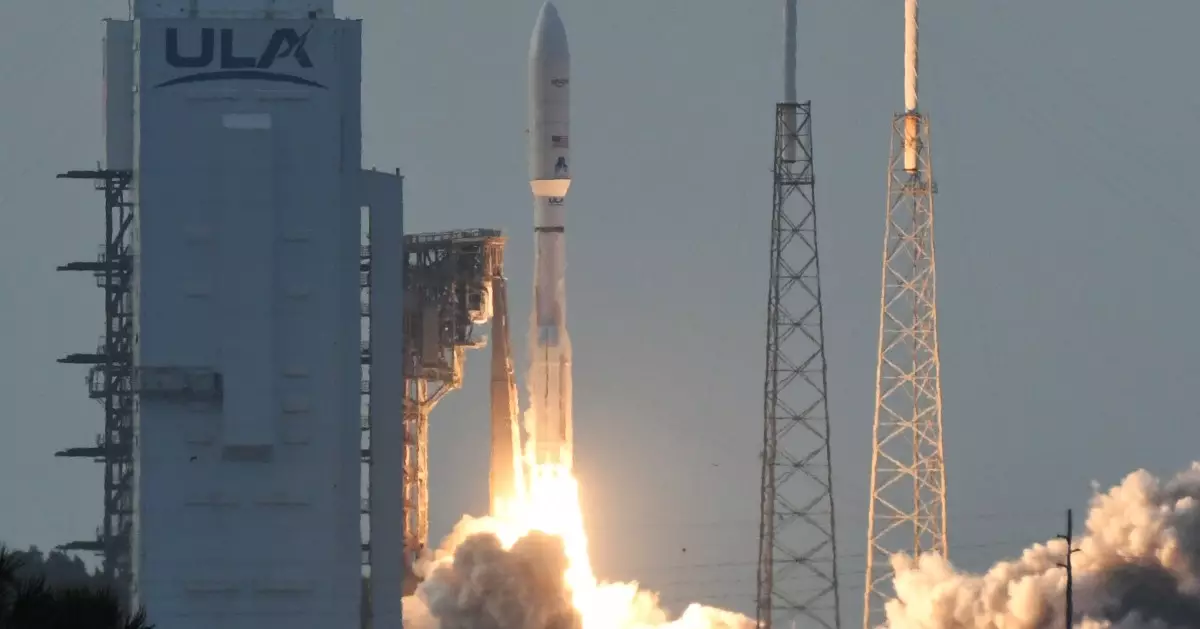The proliferation of satellite internet has taken center stage, creating a digital battleground among tech giants seeking to provide reliable, high-speed connectivity to underserved areas. At the forefront of this revolution is Amazon’s Project Kuiper, making significant strides with the deployment of its first batch of satellites. This initiative not only represents a gargantuan investment of $10 billion, but it also signifies Amazon’s audacious ambition to disrupt a market currently dominated by SpaceX’s Starlink.
On April 28th, 2024, the first 27 of the anticipated 3,236 Kuiper satellites were successfully launched into a low-Earth orbit. This initial deployment from Cape Canaveral Space Force Station serves as a launching pad—not just for satellites, but for the hopes of millions who await improved internet access. With these satellites placed 280 miles above the earth, Amazon aims to facilitate high-speed and low-latency internet connections. The operational success of these first satellites marks the beginning of what is expected to be a transformative phase in digital communications.
Technological Ambitions and Strategic Moves
Amazon’s ambitious project has generated significant hype within the tech community. The company faces a stringent deadline set by the U.S. Federal Communications Commission (FCC) to deploy at least 1,618 satellites by mid-2026, a tall order compared to the 7,200 satellites already operational under Starlink. Given this backdrop, Amazon’s launch of the initial satellites is a crucial stepping stone. Andy Jassy, Amazon’s CEO, aptly captured the essence of this complex endeavor, emphasizing the collaborative efforts that brought Project Kuiper to fruition. His sentiments mirror a necessary acknowledgment—the fight for market dominance requires not just technological innovation, but also a well-coordinated team effort.
The strategic partnership with United Launch Alliance (ULA) further solidifies Amazon’s ambitious plans. ULA’s CEO, Tory Bruno, noted the collaborative modifications to their launch facilities as a sure sign of growing capacity to tackle future Kuiper missions. This proactive approach points to a much deeper realization: succeeding in the competitive satellite internet landscape requires robust logistical frameworks and a well-planned infrastructure.
The Competitive Landscape
As the satellite internet race heats up, Project Kuiper is not just battling SpaceX; it must also contend with other emerging challengers like France’s Eutelsat and China’s Spacesail. The prospect of numerous companies deploying thousands of satellites raises an inevitable question: how will this affect the already congested low-Earth orbit? Currently, the situation resembles a digital Wild West, filled with both opportunities and challenges.
Amazon’s entry into this fray demonstrates the potential for market disruption, as it seeks to mitigate the gap created by SpaceX’s early-mover advantage. SpaceX’s recent completion of its 50th Starlink mission, significantly pushing past a total of 250 dedicated launches, amplifies the urgency for Project Kuiper’s success. The challenge lies not just in launching satellites, but in ensuring they effectively deliver the promise of improved connectivity.
The Implications for Global Connectivity
Bringing high-speed internet to isolated regions represents more than just a commercial opportunity; it embodies a chance to bridge the digital divide. The advent of Project Kuiper could enable countless underserved communities to access essential services like telehealth, remote education, and economic opportunities via e-commerce. But this lofty ambition carries with it expectations that must be met. Each satellite must perform not merely as a metallic vessel of technology but as a lifeline connecting people to possibilities previously deemed out of reach.
However, while the excitement surrounding Project Kuiper builds, skepticism remains about whether Amazon can deliver on its promises. The history of similar endeavors shows how swiftly aspirations can derail amidst operational complexities, regulatory hurdles, and fierce competition. For now, the world watches intently as Amazon embarks on this ambitious journey. The stakes have never been higher; millions await their verdict on whether this technological titan can manifest a vision into reality.


Leave a Reply